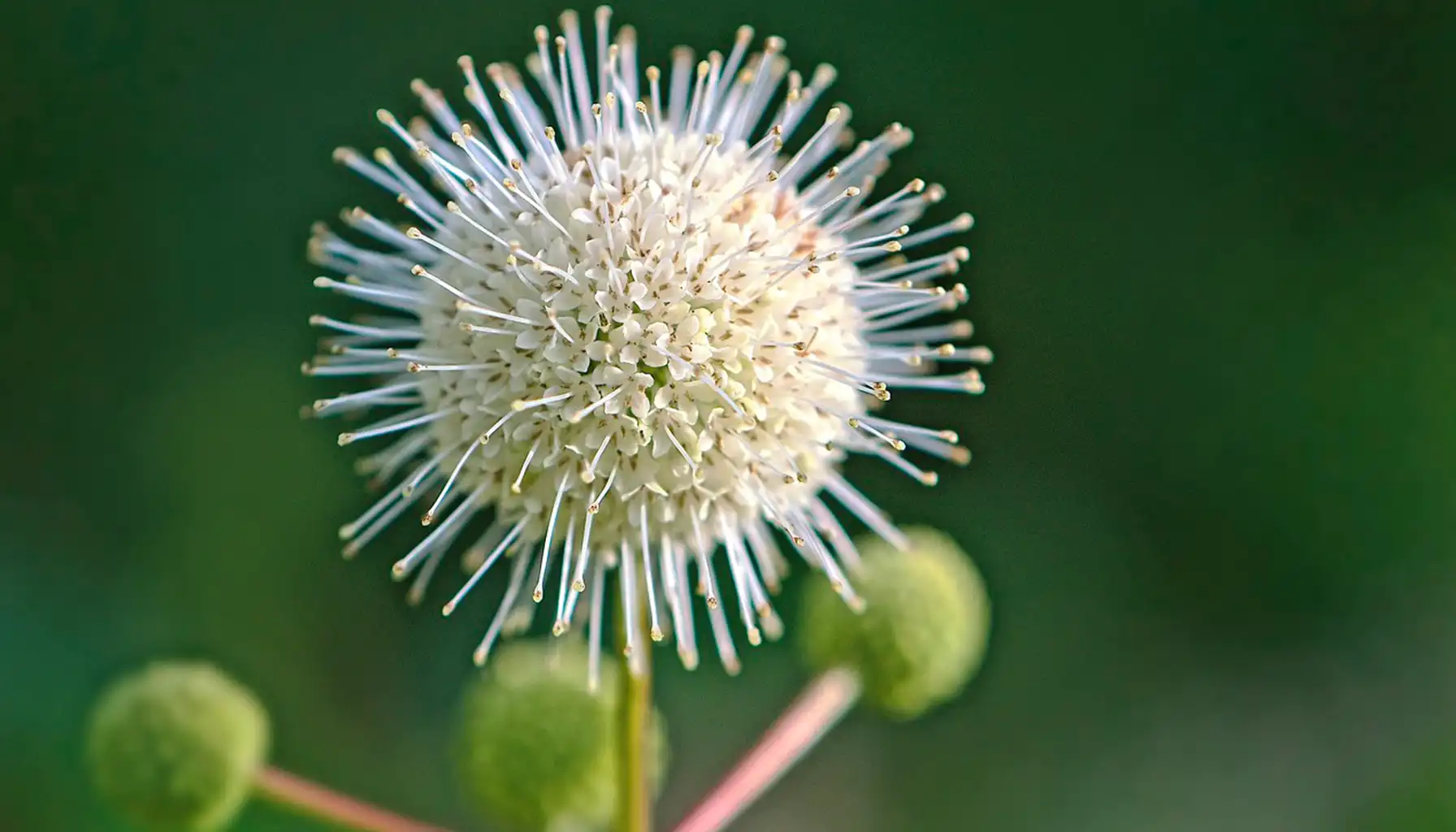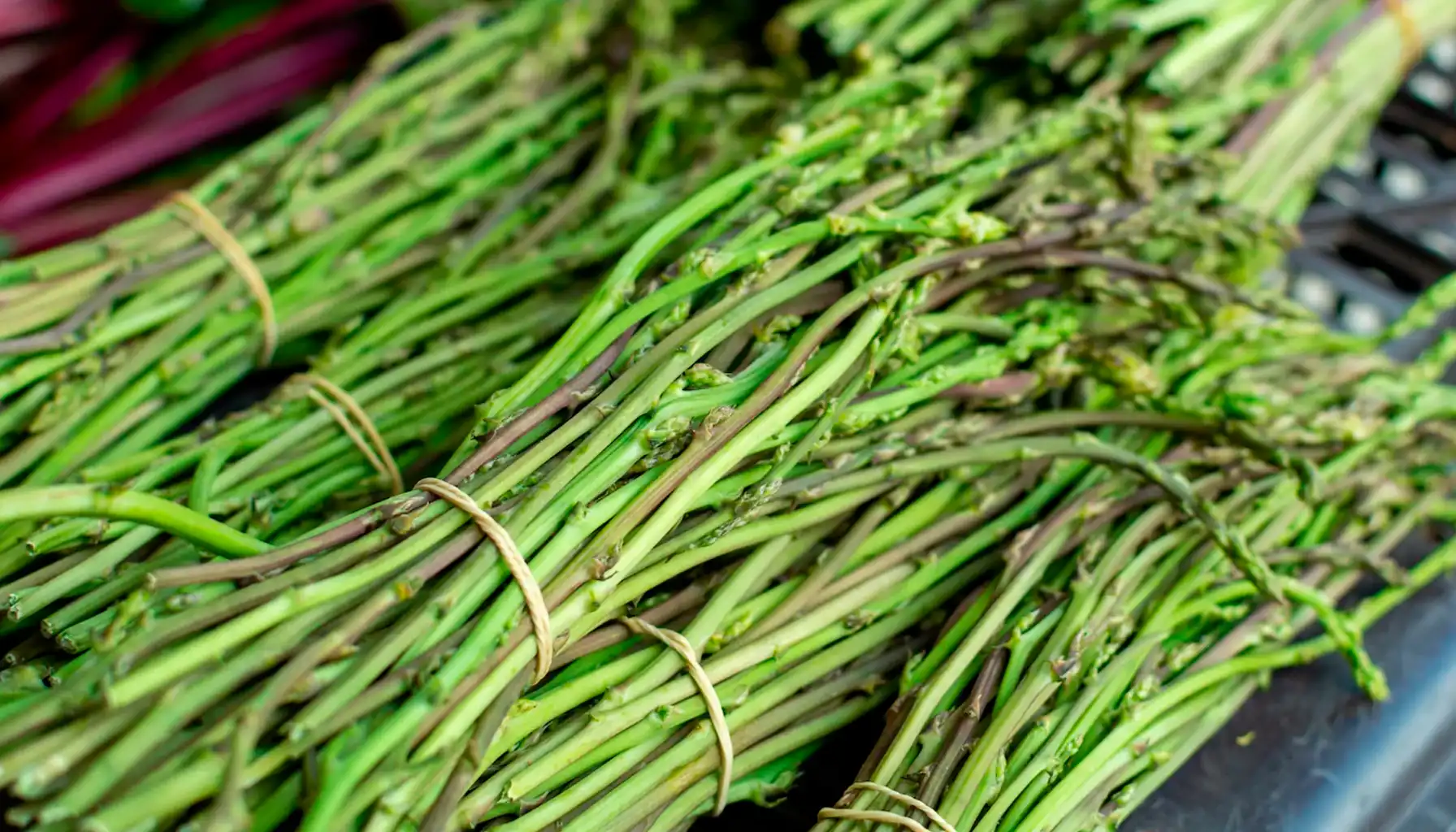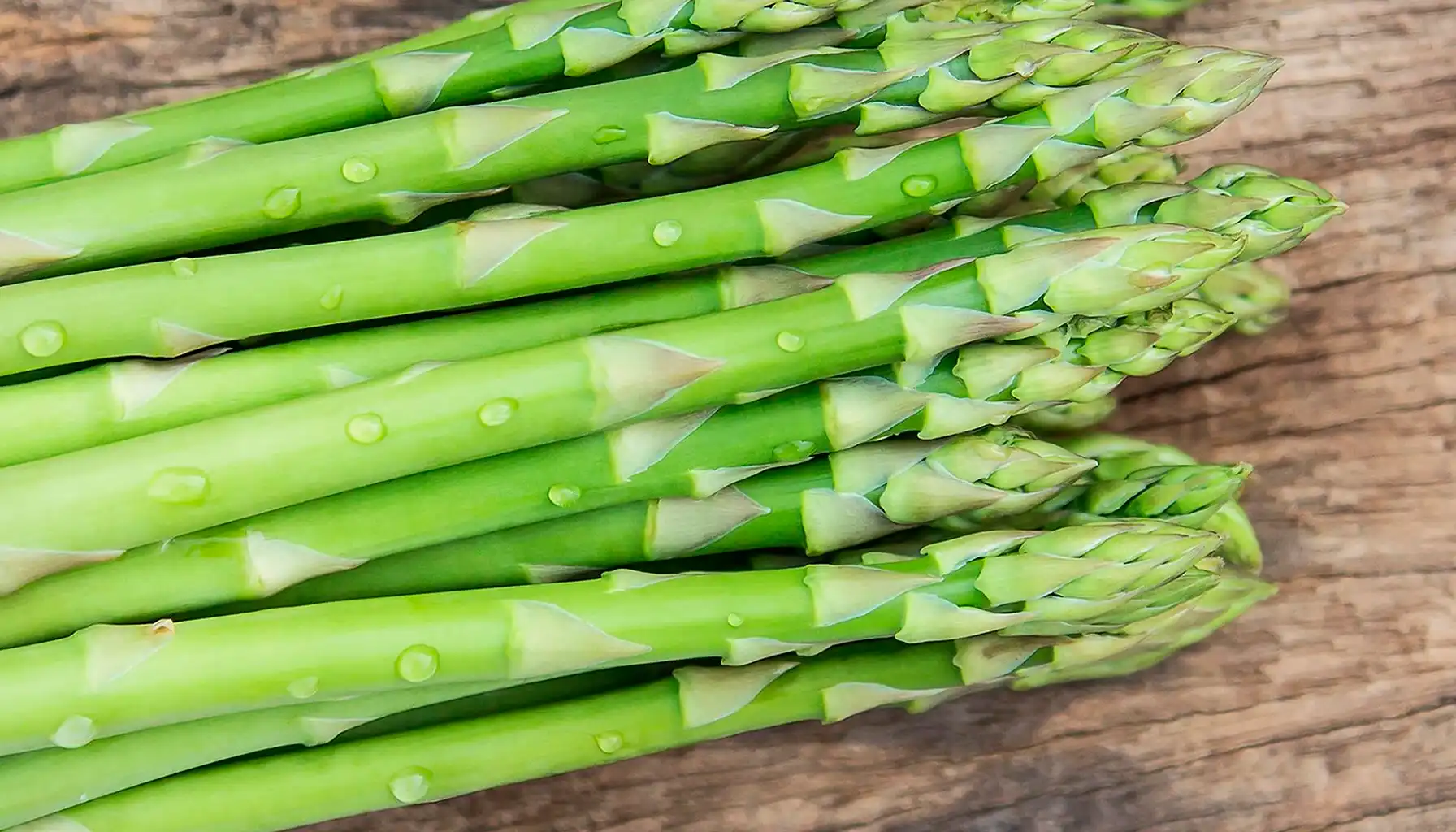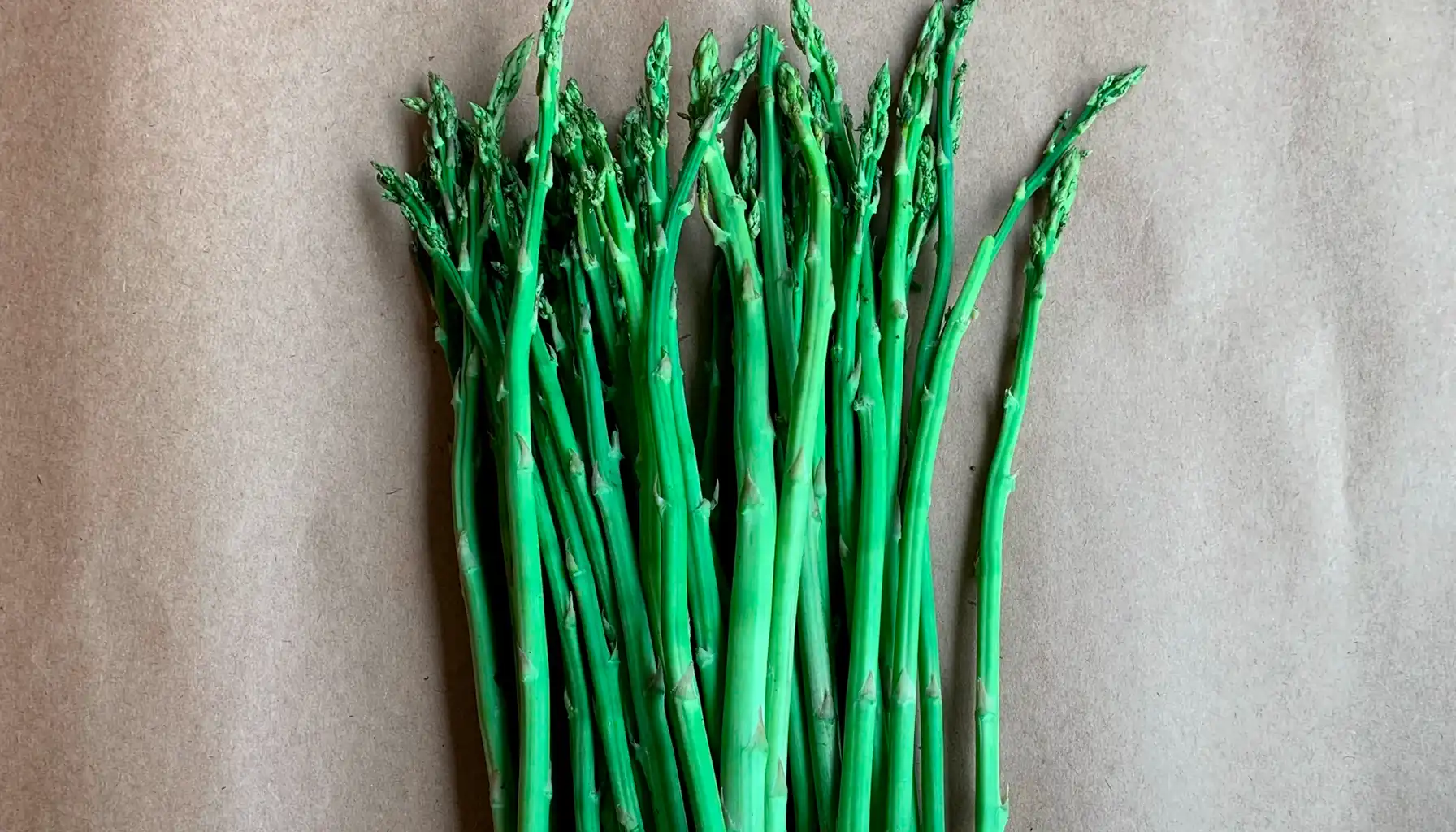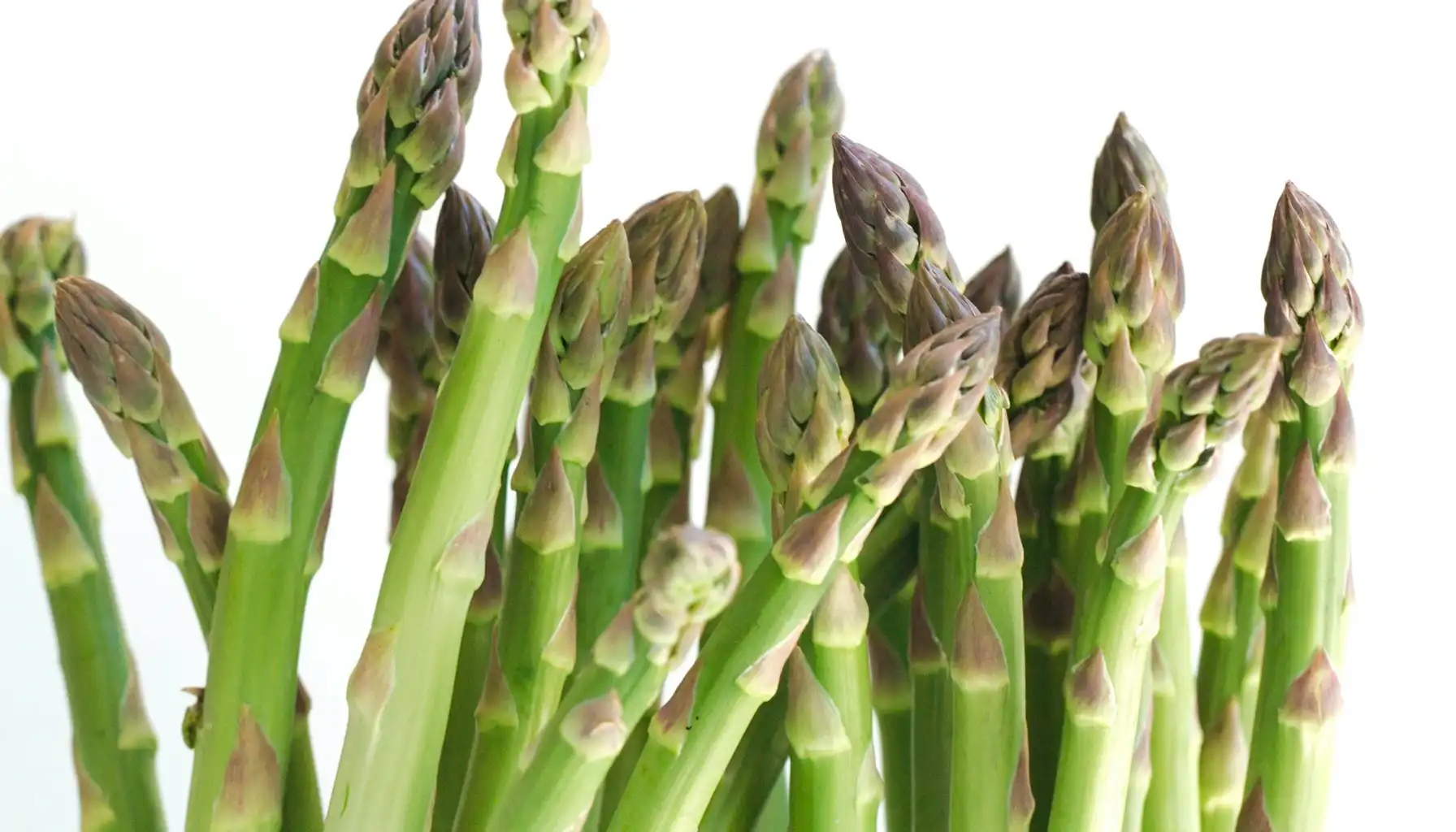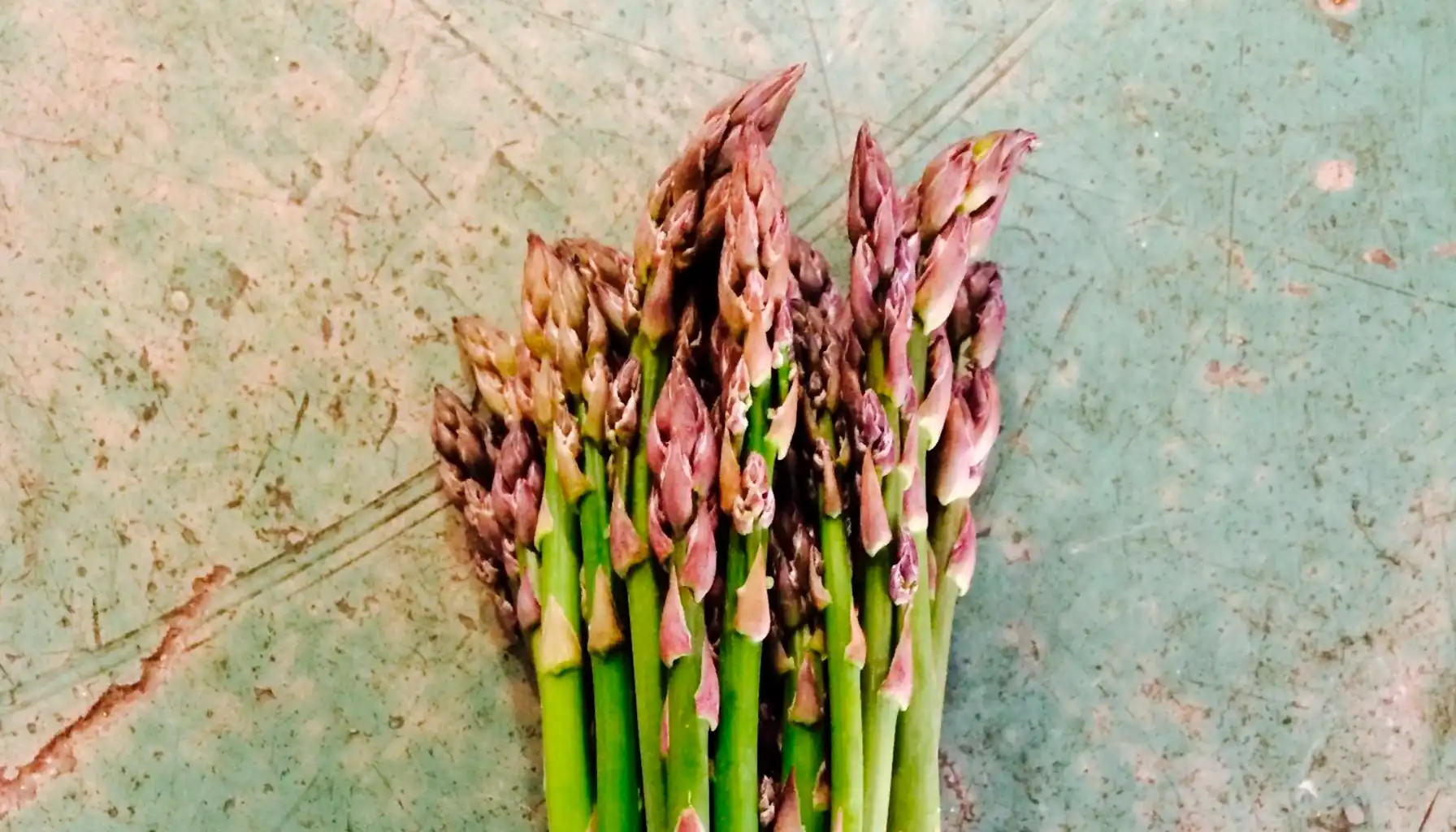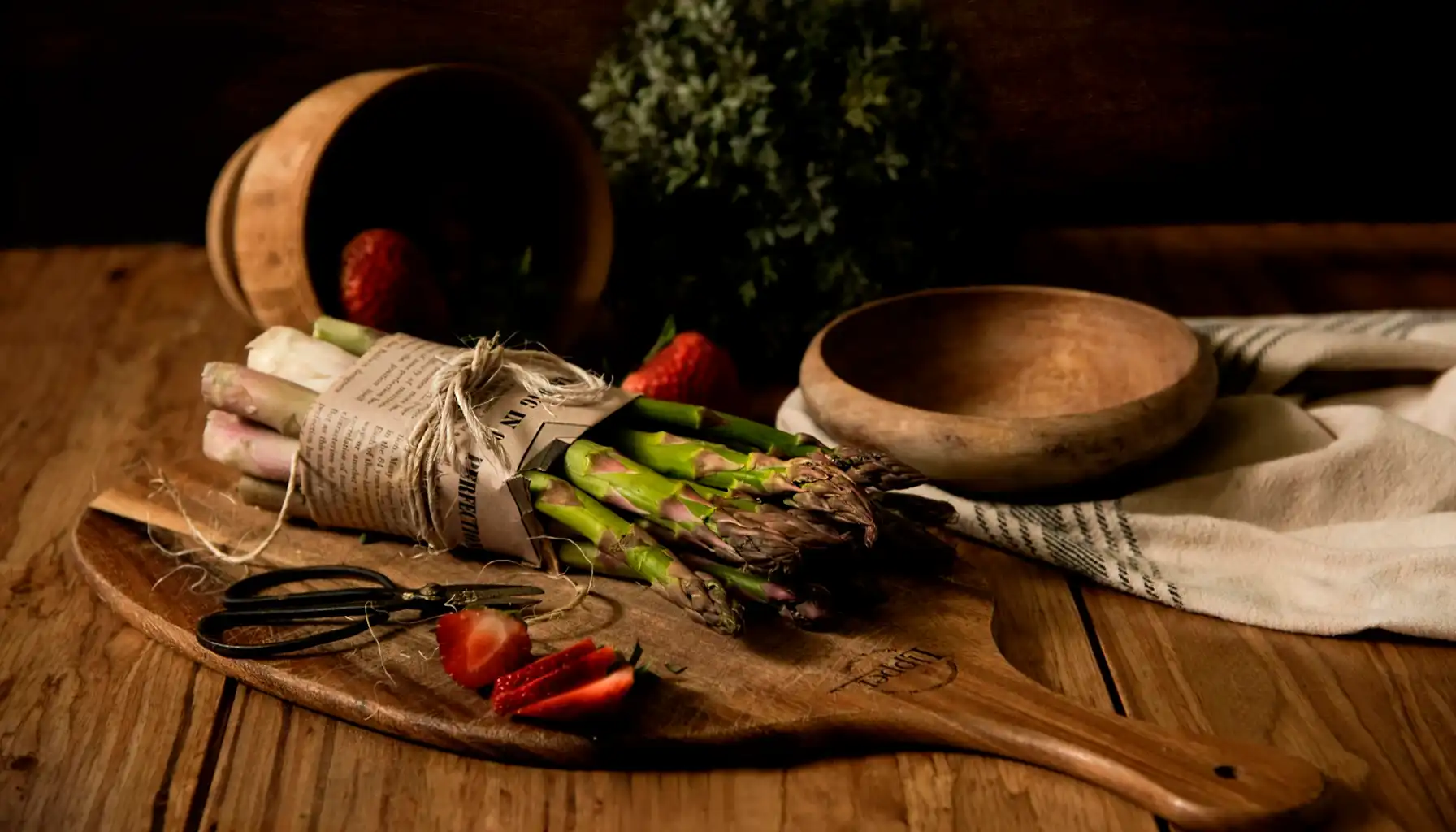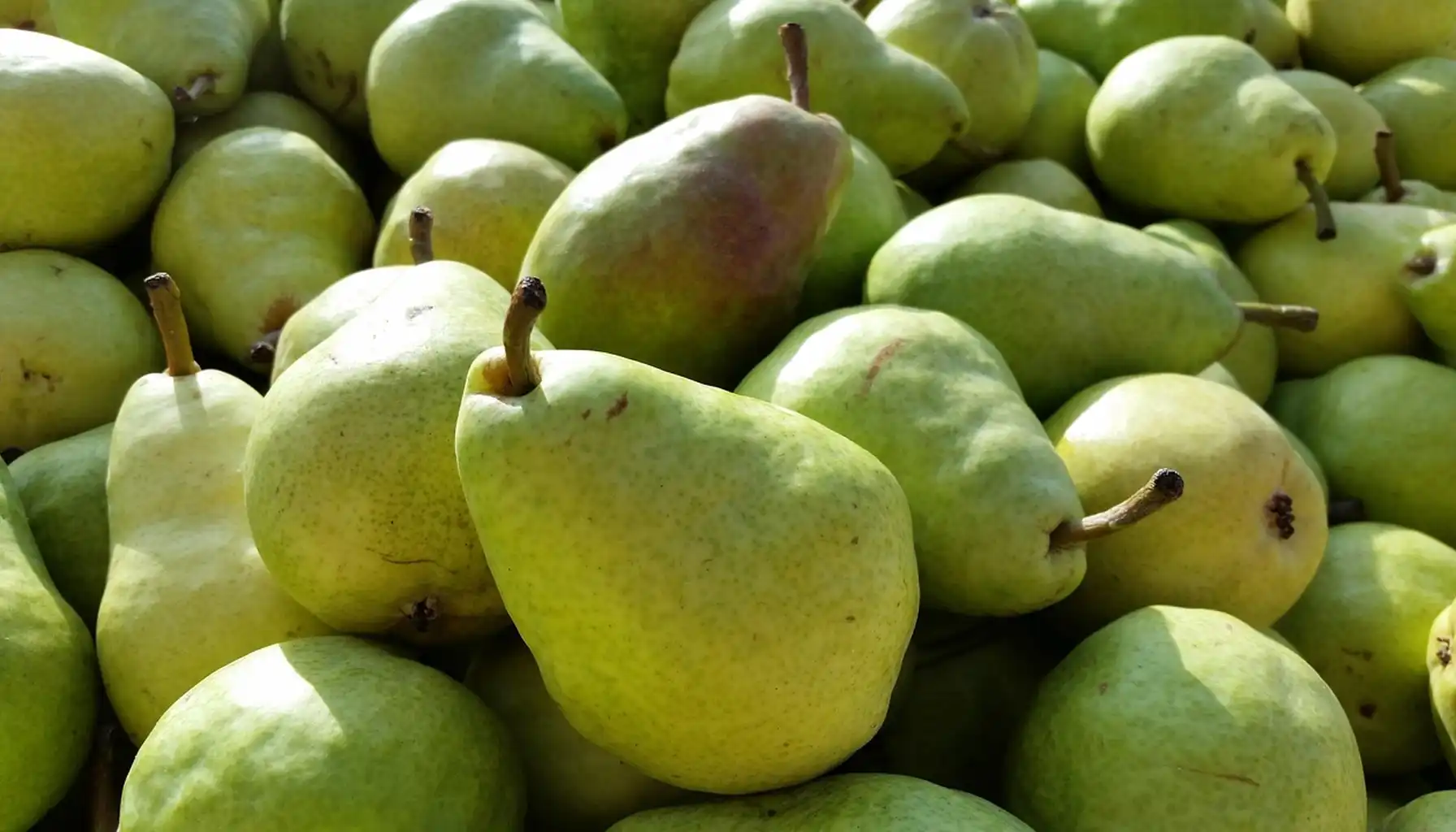People have been using this seasonal favorite for its delicate flavor and place in everyday kitchens and gourmet menus. The plant has an ancient history, with records of its cultivation by the Egyptians, Greeks, and Romans.
The edible part of the asparagus plant is the young shoot, or spear, that emerges from underground crowns each spring. When left to grow, these spears develop into fern-like foliage that stores energy for the following year’s harvest. A bed can continue producing for more than a decade.
It’s complicated to know exactly what your plant needs if you have never done it before. Try Plant ID app: an AI helper that will keep an eye on your plant, telling you what to do.
Nutrition & Health
Asparagus Nutrition
A single serving (about 100 g, raw) supplies vitamin K, which supports bone health and blood clotting. It also delivers folate, vitamin A, vitamin C, and potassium, all while being mostly water.
Is Asparagus Good for You?
Not only is asparagus nutrient-rich, it’s also naturally low in fat and sugar. A serving contains only about 20 calories, yet has antioxidants, prebiotic fiber, and hydration support. The only caution is for individuals on blood-thinning medication, who should be aware of its vitamin K content.
Asparagus Calories and Carbs in Asparagus
Per 100 g, asparagus has 20 calories, with 4 g of carbohydrates. Of those carbs, 2 g are dietary fiber, leaving a small net carb amount. Protein is modest at around 2 g per serving, and fat is nearly absent. Thanks to its high water content, it is naturally filling without being heavy.
Asparagus Health Benefits
Its antioxidants (such as vitamin C and flavonoids) help reduce oxidative stress. Inulin, a type of fiber, feeds beneficial gut bacteria, supporting digestion and metabolic balance. Studies have also linked asparagus to improving blood pressure control (it has high potassium levels) and potential immune support thanks to its vitamin A and vitamin C content.
Benefits of Asparagus :
Supports bone and blood health with vitamin K
Has prebiotic fiber for gut balance
Naturally low in calories yet nutrient-dense
Helps maintain normal blood pressure (potassium)
Supplies antioxidants for immune and cellular health
Nutrition per 100 g (raw asparagus)
Energy | 20 kcal |
Carbohydrates | 3.9 g |
Sugars | 1.9 g |
Fiber | 2.1 g |
Protein | 2.2 g |
Fat | 0.1 g |
Vitamin K | ~55% DV |
Folate | ~15% DV |
Vitamin C | ~10% DV |
Potassium | 202 mg |
Water | ~93% |
Food Safety & Pets
Can You Eat Asparagus Raw?
Yes, asparagus can be eaten raw, though most people prefer it lightly cooked (it tastes better). When uncooked, it has a crisp texture and a slightly grassy taste.
Eating it raw is safe, but some people may experience mild bloating. The plant has a lot of fiber. Light steaming or sautéing helps soften the stalks and reduce potential digestive discomfort. If you do enjoy it raw, slice it thinly or shave it into ribbons for salads.
Can Dogs Eat Asparagus?
Dogs can eat asparagus in small amounts, if it is cut into bite-sized pieces to reduce choking risk. Always serve it plain, without butter, oil, or seasonings; added flavors may upset a dog’s stomach.
Is Asparagus Good for Dogs? It has some vitamins and fiber. That said, it should never replace balanced dog food. It’s best thought of as an occasional snack; too much can lead to digestive upset. Cooked, cooled pieces are often easier for pets to tolerate than raw stalks.
Buying, Storing & Simple Prep
How to Store Asparagus
To keep asparagus fresh, treat it like cut flowers. Place the stalks upright in a jar or glass with about an inch of water, then loosely cover with a plastic bag. Or, wrap the base in a damp towel and refrigerate.
How Long Does Asparagus Last in the Fridge?
Stored properly, asparagus keeps its quality for 3-5 days, though it’s best eaten within the first 48-72 hours.
Quick Cooking Ideas
Asparagus can be roasted, sautéed, steamed, or grilled in minutes. Toss spears with olive oil, salt, and pepper before roasting, or steam lightly and drizzle with lemon. For a cold dish, try a simple asparagus salad with tomatoes, herbs, and a light vinaigrette. For a warm side, sauté spears with garlic and finish with a sprinkle of parmesan.
How to Make Asparagus
Wash and trim tough ends
Choose cooking method (steam, roast, sauté, grill)
Season lightly - olive oil, salt, pepper, or lemon
Cook until tender-crisp, usually 5–10 minutes
Storage Do’s & Don’ts
Do keep stalks cold and moist
Do trim the ends before storing
Don’t leave asparagus sealed in a dry bag
Don’t wash until just before cooking
How Asparagus Grows
Unlike annual crops, it is a perennial that can remain productive for 10–15 years when well cared for. The edible part is the young spear, which grows each spring from underground crowns.
Each spring, buds on the crown send up shoots that rapidly elongate, sometimes several inches in a single day during peak season. Gardeners harvest these spears for about 6–8 weeks, then allow the plant to “fern out.”
These feathery stalks are important because they collect sunlight and store energy for the next year’s harvest. Male plants are preferred in gardens because they produce more spears and do not expend energy on seed production.
Green, Purple, and White Asparagus
Most people are familiar with green asparagus, but purple varieties exist with a sweeter flavor and higher anthocyanin content. White asparagus, popular in parts of Europe, is grown by mounding soil over the spears, so they develop without sunlight.
Wild Asparagus
In some regions, wild asparagus can be found growing naturally along roadsides or field edges. It looks like a cultivated variety, but it often produces thinner spears. Foragers should be cautious, since plants may be exposed to pesticides or roadside pollutants.
Bed Age | Typical Spear Thickness | Harvest Notes |
Year 1–2 | Thin, pencil-like | Establishment phase: little to no harvest |
Year 3–5 | Medium to thick | Full harvest period begins |
Year 6+ | Thick, sturdy | Consistent annual harvests; quality depends on maintenance |
Planting & Site Prep
This perennial will occupy the same space for many years. Choose a sunny, well-drained site and invest time upfront to create healthy soil conditions.
Soil and Bed Preparation
Asparagus likes soil with a pH of 6.5–7.0. Waterlogged ground can quickly rot crowns. Raised beds are often recommended in areas with heavy soil. Before planting, clear weeds thoroughly and enrich the soil with compost or aged manure.
Planting Asparagus
Dig trenches about 6-8 inches deep and 12 inches wide. Place crowns at the bottom, spreading roots like a fan, and cover with 2 inches of soil. As shoots emerge, gradually backfill until the trench is level. Space crowns 12-18 inches apart, with 3-4 feet between rows, to allow airflow and easy maintenance. Plant it with other Everyday Edible Leaves to have your little grocery market in the backyard.
Asparagus Crowns for Sale
Garden centers and online suppliers typically offer one-year-old crowns, which give a head start compared to seedlings. Look for firm, plump crowns without signs of rot. Purchasing high-quality crowns is one of the best investments for a productive bed.
Growing From Asparagus Seeds
It’s cheaper than crowns, but starting from asparagus seeds takes longer. Seedlings spend their first year in a nursery bed before transplanting in year two. By year three, plants may begin light production. Some gardeners prefer seeds to avoid the potential transfer of diseases sometimes present in older crowns.
Timing and Climate
Plant asparagus in early spring as soon as the soil is workable. In warmer regions, late fall planting may also be possible.
USDA Zone | Planting Window | Trench Depth | Crown Spacing | Notes |
Zone 4 | Late April–May | 6–8 in | 12–18 in | Short growing season; mulch for winter |
Zone 5 | April–early May | 6–8 in | 12–18 in | Good fit for most varieties |
Zone 6 | March–April | 6–8 in | 12–18 in | Earlier spring start |
Zone 7 | Feb–March | 6 in | 12–18 in | Monitor for heat stress later in the season |
Zone 8 | Jan–Feb | 6 in | 12–18 in | Early planting prevents spear heat damage |
Zone 9 | Dec–Jan | 6 in | 12–18 in | Select heat-tolerant varieties |
Care, Harvest & Ongoing Maintenance
Watering and Feeding
Asparagus requires about 1–2 inches of water per week during the growing season. Mulching helps retain soil moisture and suppresses weeds. Fertilizer is applied in early spring before spears emerge and again after the harvest season to replenish nutrients.
Harvesting Practices
When growing asparagus no spears should be harvested the first year, and only light picking is allowed in the second. A full harvest begins in year three, lasting 6 to 8 weeks. Cut or snap spears when they reach 6 to 8 inches tall, and stop when new shoots appear, thinner than a pencil.
Asparagus Growing Pace
During peak spring conditions, spears grow quickly, sometimes up to several inches per day. This means harvesting often, even daily, to catch spears at their best size and flavor. In the summer, growth slows and plants shift to producing tall ferns that store energy.
Indoor/Outdoor “Asparagus Fern” (Houseplant Companion Guide)
The asparagus fern is not the same as the edible crop. The common houseplant is usually Asparagus setaceus or Asparagus aethiopicus. These are grown for beauty, like the Anemone Flower, not for food.
Asparagus Fern Plant Basics
They grow with arching stems covered in needle-like cladodes that resemble soft leaves. They are hardy and adaptable when given proper care.
Light, Water, and Soil
This plant is pretty adaptable, almost at the same level as Aloe Vera. The ideal setting is bright, indirect light. Asparagus fern light requirements: direct midday sun can scorch foliage, but too little light causes weak growth. Water regularly, letting the top inch of soil dry between waterings.
Propagation
The preferred method of asparagus fern propagation is usually done by division during repotting, when root balls can be carefully separated. Growing from seed is possible, but slower and less common.
Troubleshooting
Yellowing is a frequent issue. An asparagus fern turning yellow may mean underwatering, poor humidity, or excessive sun. General asparagus fern yellowing may also result from nutrient deficiency or being rootbound.
Safety Notes
These ferns contain saponins, which are mildly toxic. Is an asparagus fern toxic to cats? Yes, it can cause stomach upset, drooling, or skin irritation if the animal chews or rubs against the plant. Keep it out of reach of pets.
Popular Types and Cultivars
Asparagus fern sprengeri / sprengeri asparagus fern / sprenger's asparagus fern: trailing type, often used in hanging baskets
Myers asparagus fern (also called asparagus foxtail fern): upright, bushy form resembling bottlebrush spikes
Climbing asparagus fern: vigorous, outdoor species that can become invasive in warm climates
Indoor asparagus fern: a general term for potted specimens used decoratively inside
Asparagus fern outdoors: suited for containers or controlled beds in mild climates; can spread aggressively if unmanaged
Type/Cultivar | Habit | Light | Water | Notes |
Asparagus fern sprengeri | Trailing | Bright, indirect | Moderate | Good in baskets |
Myers asparagus fern (Foxtail) | Upright, bushy | Bright, indirect | Moderate | Distinct bottlebrush stems |
Climbing asparagus fern | Vining | Partial sun | Regular | Invasive in warm zones |
Indoor asparagus fern | Compact | Indirect | Regular | Popular houseplant |
Asparagus fern outdoors | Variable | Sun/partial | Regular | May spread without control |
Troubleshooting Table
Symptom | Likely Cause | Fix |
Yellowing | Low water, low humidity, or nutrient issues | Adjust watering, mist, and fertilize lightly |
Scorch/brown tips | Too much direct sun | Move to indirect light |
Legginess | Low light | Relocate to a brighter spot |
Rootbound | Crowded roots | Repot and divide |
Conclusion
We’ve covered how it grows, the basics of planting and care, and practical tips for buying, storing, and preparing it at home. We also looked at asparagus ferns, attractive ornamentals often mistaken for their edible cousin, but grown only for their graceful foliage.
FAQ
How long until the first full harvest?
Asparagus beds need patience. Light picking may start in year two, but the first full harvest generally comes in year three.
What’s the best quick seasoning or cooking technique?
The simplest way is to drizzle spears with olive oil, add a pinch of salt, and roast at high heat for 10–12 minutes.
Can I grow asparagus in heavy clay soil?
Clay soil drains poorly and can cause root rot. If clay is unavoidable, amend heavily with compost and organic matter, or build raised beds to improve conditions.
Why do spears get thin over time?
Thin spears are often a sign of crown fatigue, over-harvesting, or poor nutrient reserves. Allowing the plant to fern out fully each season and fertilizing after harvest helps maintain spear thickness year to year.
Related AI Plant Finder Posts
